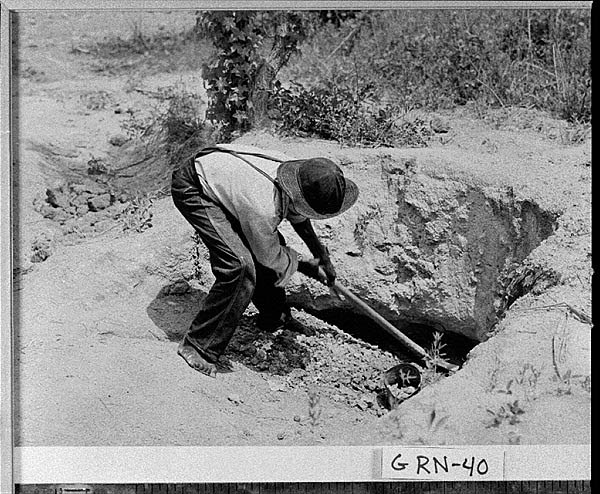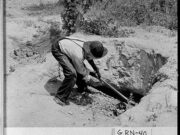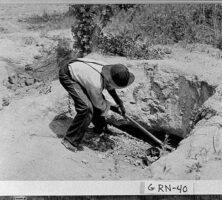The ingestion of kaolin, also known as “white dirt,” “chalk,” or “white clay,” is a type of pica (eating of nonfood substances). Found in the central Piedmont section of Georgia, vast deposits of kaolin are mined around Sandersville, in the area between Macon and Augusta. Kaolin is a naturally deposited clay used in the manufacture of ceramics as well as in coatings for paper and textiles. It is also a key ingredient used in medicines for diarrhea.

Courtesy of Georgia Archives.
Geophagia (earth eating) has been observed and documented in many areas of the world, but a specific preference for kaolin is less well known. There is, in fact, little published research on geophagia, particularly the ingestion of kaolin. Case studies suggest that physicians practicing in the central Piedmont area of Georgia routinely encounter patients who eat chalk. In addition, Georgia Health Sciences University faculty and practicing community physicians in the Augusta area report having heard of clay-eating or have encountered chalk-eating patients.
When asked why they eat chalk, many persons respond that they like the taste or that they crave it. They usually acquire the clay from friends, neighbors, or family members or dig it directly from the earth. Surprisingly, it is sometimes available at stores, where it is packaged like fresh produce and often labeled, “Down Home Georgia White Dirt. Novelty. Not Suggested for Human Consumption.”
Published accounts report that it is not unusual for pregnant women in rural Georgia and elsewhere to engage in some type of pica. Patients and health care providers may not even consider this behavior abnormal, given the acceptance of women’s cravings during pregnancy. The ingestion of white clay occurs predominantly among African American women who have been introduced to eating clay by family members or friends, either as children or during pregnancy. Clay-eating by men or non-African Americans is unusual, though cases have been reported. Anecdotal evidence suggests that some persons on routine renal dialysis crave kaolin and will ingest it even while being dialyzed.
Many of the women who engage in kaolin-specific pica complain of constipation. Some even suffer ruptured colons. Low blood-hemoglobin levels, a sign of anemia, are common, because the ingestion of kaolin inhibits absorption of iron from foods. Those who eat clay at the expense of healthier foods often develop malnutrition. Since kaolin-specific pica typically begins during pregnancy, there may be consequences for the unborn child. Women should be discouraged from engaging in pica, especially during pregnancy.





